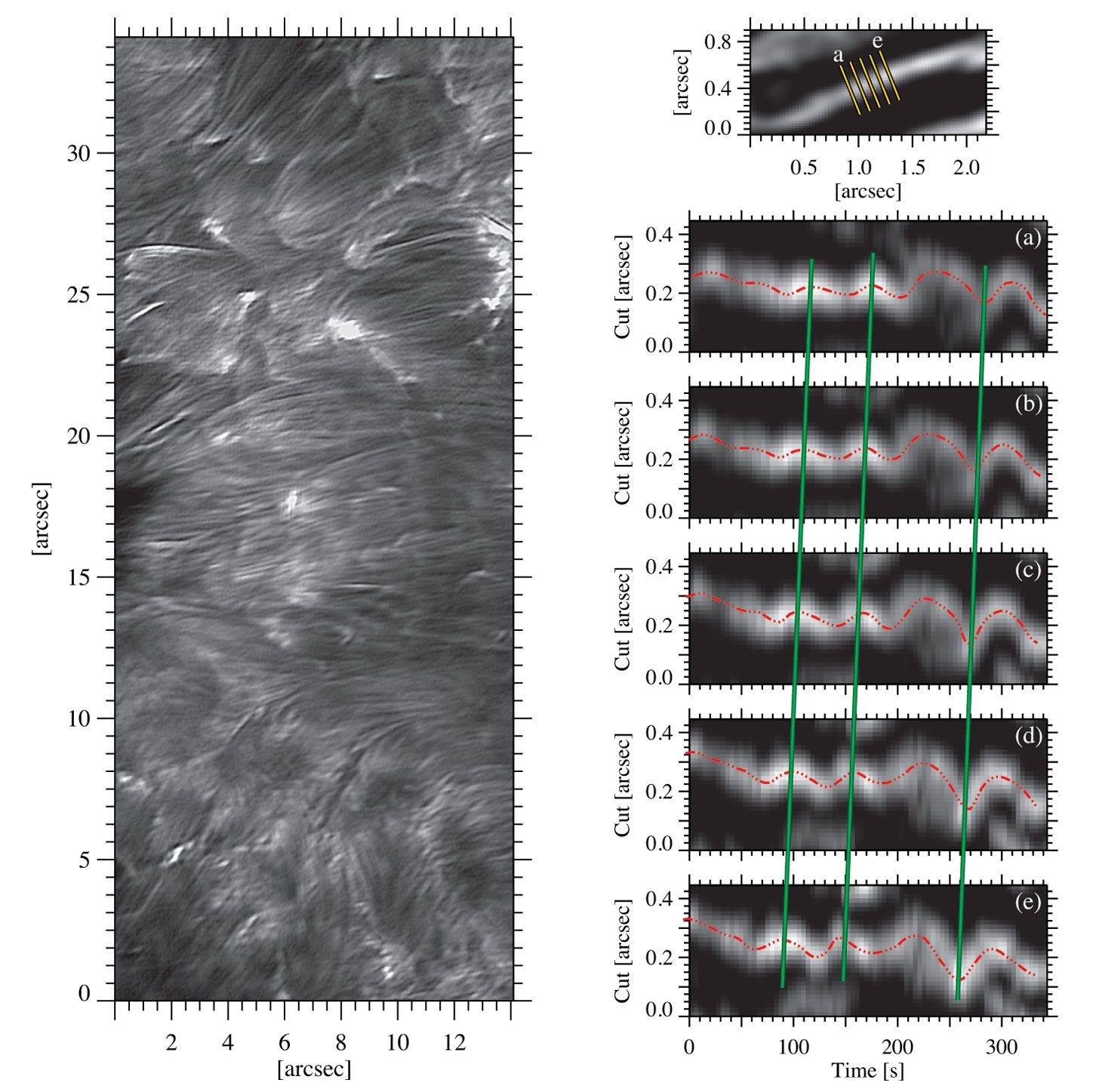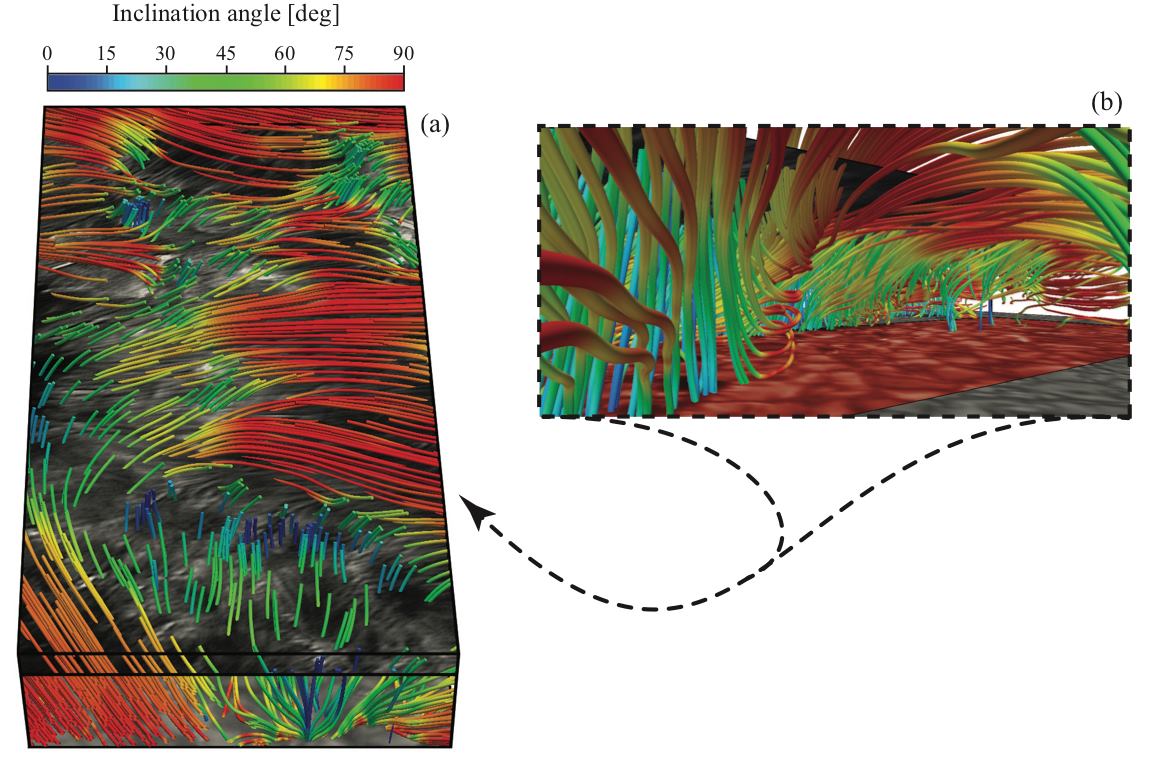
Magneto-hydrodynamic (MHD) waves are often presented as a principal mechanism allowing the transfer of energy and momentum throughout the solar atmosphere. These waves can be identified in various magnetic structures, including slender Ca II H fibrils which are believed to map the magnetic fields in the low solar chromosphere. These fibrillar structures are believed to manifest magnetic fields at chromospheric heights.

The figure below shows a dense forest of slender bright fibrils near a small solar active region as seen in high-quality narrowband Ca II H images recorded by the SuFI instrument onboard the 1-m SUNRISE balloon-borne solar observatory.

An inside view of the magnetic canopy (i.e., the magnetic field lines lying over a region with weaker field) is illustrated on the right, from a viewing angle shown by the arrow.
The detection of tiny, bright thread-like structures in the low solar chromosphere requires very high-spatial resolution observations. The advanced optics and measuring instruments of the future 4-m European Solar Telescope - EST will enable us to identify many of these small-scale fibrillar structures and study both their magnetic fields and the various kinds of MHD waves they support.
For more information, see Jafarzadeh et al. 2017, ApJS, 229, 11.
“The science of EST” is a series of short posts for social media where researchers talk in a plain language about a particular topic of their choice and how EST will improve our knowledge on that topic. The aim is to raise awareness among the general public about why solar physicists study the Sun, what the hot topics in today’s solar physics are, and how EST will leap forward our knowledge of the Sun.
All the posts can be found in "The Science of EST" (ext. link).
